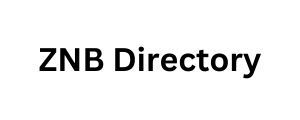Vyacheslav, hello! Thank you for joining the project! Let’s get straight to the point: tell us how you got into marketing and what path did you take?
At the age of 19, I decided that I wanted to develop in marketing after working in the election headquarters of a
candidate for deputy – this was my first experience in PR and communications, my first experience in creating brand
value and determining communication channels for delivering messages, my first experience in selecting audiences to
attract, my first experience in interacting in a team and distributing roles in it.
After graduating from university, I went to an advertising agency, where I learned a lot: for example, how to manage
several projects with different tasks and switch between them wisely. This was followed by experience working with
retailers who were actively developing, and then I got acquainted with e-commerce, which still hasn’t let me go.
In retail, I started with offline sales channels, then online sources joined in – it was an interesting experience! You
observe the evolution of the customer journey and continue to create a competitive advantage, convey it through digital
and PR. The latter, by the way, has been completely digitized and is not just a source of growth in brand awareness, but
also a powerful channel of free traffic, which is vital for e-com companies.
With many years of experience in advertising, what do you think makes up the ideal marketing team? What structure, roles and processes do you consider critical to success?
The perfect team is my team!
But let’s get back to the question: an exemplary organizational structure of a marketing team in a company is one that
represents an ecosystem for business. It takes into account the key business processes of the company, it divides roles
into areas: brand and communications, e-commerce, analytics, customer experience and customer database
management, product and pricing, research. Each area has indicators for which its manager is responsible. These
metrics are measurable and provided with the necessary resources for management by the company.
The listed processes support the financial flow of the business, and also create conditions for its sustainability in any changing situations.
How do you evaluate the effectiveness of marketing communications? What metrics do you focus on?
There are many metrics: for a product – food cost and penetration, share in the sales structure; for e-commerce, the
main ones are CAC, CPO, CPI, ARPU, DAU, WAU, MAU; for target marketing – frequency, average check, size of the
segment of the most profitable clients for the company, egypt business email list Marketers in mobile churn, revenue from direct marketing
channels; for PR – coverage, involvement, growth of brand queries. And all these metrics are affected by operational
indicators, namely: availability of IT services and system stability, availability of time intervals for receiving an order,
delivery speed, share and average time of delays.
You can stimulate the user to buy as much as you like less search, more topic exploration with the help of various attraction tools, however, operational
(they are also rational) components in the decision-making process of the end buyer are important. Conversion via
direct marketing channels can be incredibly high with the appropriate service, as well as vice versa.
Interesting! It’s high time to talk about your mobile product. For a dark kitchen, the role of an app in business development cannot be overestimated. When there are no offline points, it becomes a sales booster. Tell us what strategies should be used so that the app not only serves orders, but also actively stimulates their growth?
The focus of such companies should be in the area of customer experience, and it should be conditionally divided into emotional and rational. Giving impressions to the consumer is a must in highly competitive markets. The emotions that a brand gives are exactly what allows it to be Marketers in mobile differentiated from all the others; to grow and maintain interest in it; to form the volume and quality of knowledge. This is a function of PR and communications, of course.
And as for the growth of the number of installations, b2c fax In-App should occupy a significant share of the marketing budget. The costs of In-App offers need to be increased. Users of mobile applications should be prioritized, since they are the most profitable and loyal for companies.
Retention, in turn, is the task of a loyalty program built on the analysis of users’ purchasing behavior.
So the formula is simple: customer interest in the brand + offer to install the app + offer to return and convert into repeat purchases = predicted sales result.
